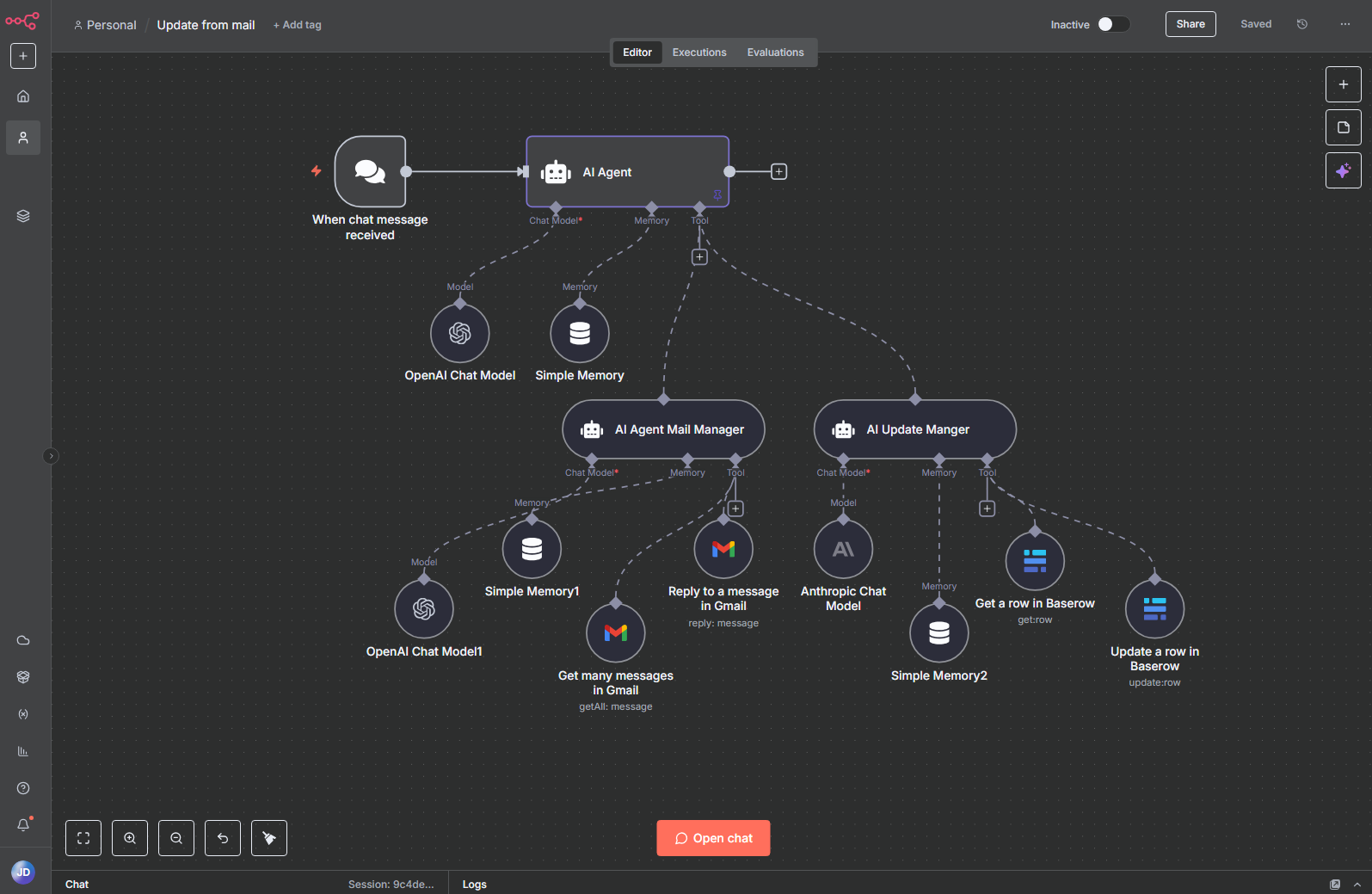n8n’s AI Agent Tool at a Glance
- Simplified AI agent orchestration. New node enables managing multiple AI agents on one canvas.
- Layered workflow support. Primary agents can delegate tasks to specialized agents in tiers.
- Developer efficiency boost. Helps workflow builders create, debug and manage multi-agent systems faster and with less complexity.
n8n has released its new AI Agent Tool node. According to company officials, the new feature enables a simplified pattern for multi-agent orchestration that can run in a single execution while remaining on one canvas.
The tool allows users to connect multiple AI Agent Tool nodes to a primary AI Agent node, allowing supervision and delegation of work across specialized agents. This approach is designed to help technical teams build complex systems that function like real-world teams.
n8n states the node supports multi-tiered organizational structures where agents can direct other agents, while also improving prompt management by splitting complex instructions into smaller, focused tasks.

Multi-Agent Orchestration Is the Future of AI Workflows
N8n’s multi-agent orchestration solution aims to simplify management and debugging of multiple AI agents within a single execution environment.
The move comes amid growing recognition that comprehensive agent orchestration platforms will be essential for managing AI systems at scale. Rather than building all-knowing agents, companies are increasingly creating specialized agents with defined roles, according to industry experts.
Microsoft has been particularly active in this space, framing Copilot as a platform for building fleets of business-specific agents and releasing its Azure AI Foundry Agent Service for multi-agent workflows. Similarly, OpenAI launched its Operator preview, while Anthropic introduced Claude's computer use functionality.
n8n aims to support this shift in how organizations deploy AI, with orchestration tools becoming increasingly important for coordinating specialized agents, maintaining security protocols and enabling human-agent collaboration across business processes.
Related Article: How to Build Multi-Agent Workflows That Don't Fall Apart
Use Cases: Who Should Use the AI Agent Tool Node?
The n8n AI Agent Tool Node is purpose-built for technical professionals who need to orchestrate complex, multi-agent AI workflows within a unified automation platform. This feature is especially valuable for teams focused on optimizing efficiency, scalability and control in AI-driven systems.
- IT Operations and DevOps Teams: Professionals looking to streamline workflow automation, manage infrastructure-as-code and improve operational efficiency through intelligent agent coordination.
- AI Developers and Engineers: Those building multi-agent systems who need a reliable way to assign tasks across specialized agents, manage inter-agent communication and optimize prompt handling.
- Technical Teams Managing AI Orchestration: Teams overseeing complex AI workflows at scale, particularly in environments where layered decision-making, fallback logic and high customization are required.
n8n AI Agent Tool: Features and Configurations
According to n8n, the AI Agent Tool node offers several configuration options:
| Capability | Description |
|---|---|
| Single-canvas orchestration | Manage multiple agents without sub-workflows |
| Specialized agent delegation | Primary agent can assign tasks to specialized agents |
| Multi-tiered structures | Support for layered agent-to-agent workflows |
| Prompt management | Split complex instructions across multiple agents |
| Parameter configuration | Set descriptions, prompts and output formats |
| Fallback models | Connect backup chat models for reliability |
| Batch processing | Control parallel processing and rate limiting |
Related Article: LambdaTest Launches First AI Agent Testing Platform
n8n at a Glance: Platform, Vision and Growth
n8n targets technical teams and developers seeking to automate workflows and integrate disparate systems. The company was founded in 2019.
Workflow Automation Platform
n8n offers a low-code workflow automation solution that enables users to connect multiple applications and automate complex business processes. It supports a wide range of integrations, including cloud services, databases and APIs.
The open-source nature of the tool allows for customization and self-hosting, which appeals to organizations with specific compliance or security requirements.
Market Position
Operating in the workflow automation and integration market, the n8n serves small to mid-sized businesses as well as enterprise teams with technical expertise. Its user base often includes IT professionals, developers and operations teams seeking flexibility and control over automation.
The open-source model differentiates it from proprietary alternatives, enabling adoption in organizations with unique integration needs or regulatory constraints.
